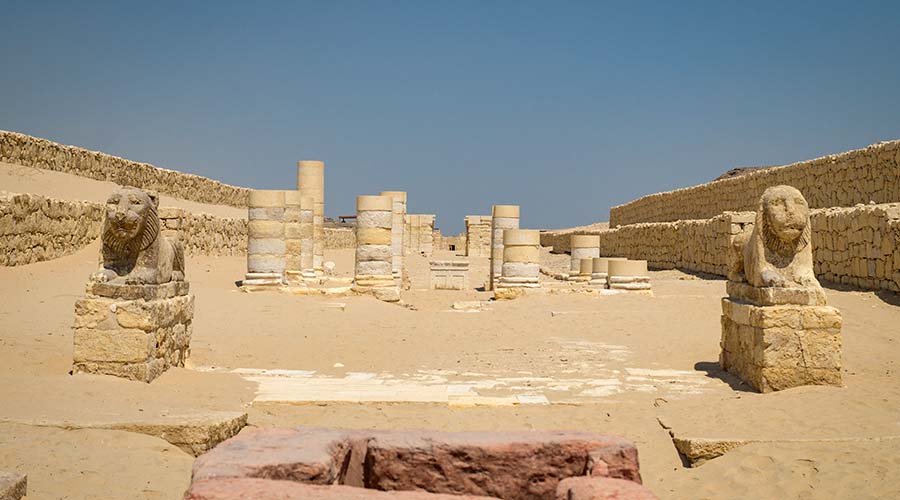History & Heritage
1.19.2024
Exploring Medinet Madi, a little-known archaeological gem in Egypt

A trip to Egypt is always a rewarding experience, offering fascinating evidence of ancient Egyptian civilisation. But are you familiar with the archaeological site of Médinet Madi in Fayoum? Little known to the general public, it nonetheless boasts some surprising remains that are well worth a visit. It’s a must-see after your visit to the pyramids.
A trip to Egypt is always a rewarding experience, offering fascinating evidence of ancient Egyptian civilisation. But are you familiar with the archaeological site of Médinet Madi in Fayoum? Little known to the general public, it nonetheless boasts some surprising remains that are well worth a visit. It’s a must-see after your visit to the pyramids.
An alley between lions, sphinxes and columns
Perched on a small hill in the south-west of the Fayoum region, the archaeological site of Medinet Madi came to light after many years of excavation. Its Arabic name “medinet madi” literally means “city of the past”. The site dates back to the Pharaonic, Roman, Coptic and Ptolemaic periods. Hieroglyphs and carved tablets have been found during research. The site also boasts the only preserved temple in the Middle Kingdom. But that’s not all! You can admire the remains of three other temples, a small chapel dedicated to Isis, and a majestic alleyway where statues of lions and sphinxes reign supreme. This place from another time is set in the Wadi El Rayan desert, a protected nature reserve.
Voir cette publication sur Instagram
The crocodile pond
The Medinet Madi site is full of mysteries. Around 2010, a team of Italian Egyptologists and architects discovered 39 crocodile eggs in a sand-covered hole. This surprising discovery suggests that the structure was used for incubating the eggs and rearing the reptiles. In an adjacent room, a perfectly preserved stone bath leaves little room for doubt. This suggests that the building was used as a nursery for sacred crocodiles which, once hatched from their eggs, could be placed in the bath, probably for a short period, before the animals were sacrificed, mummified and sold to visiting worshippers […]”, writes the author. […]”, writes Egyptologist Edda Bresciani in her excavation report.
A fascinating archaeological site that requires you to cross a short section of desert. The path is not permanently signposted, so a guide is recommended.
popular

